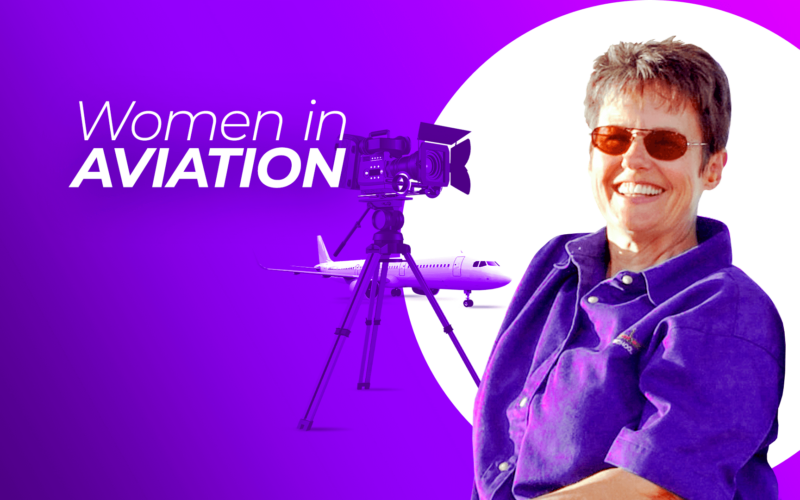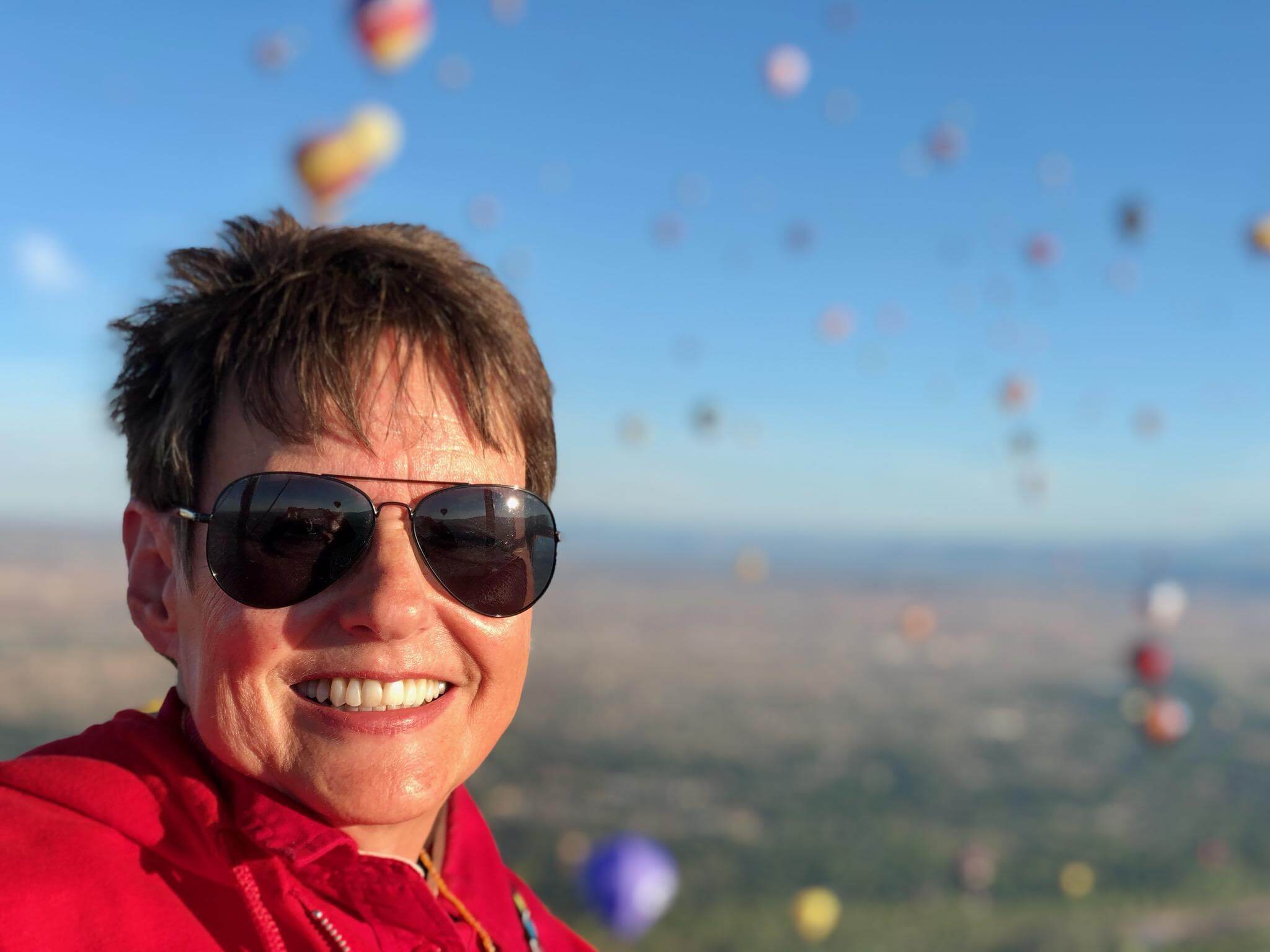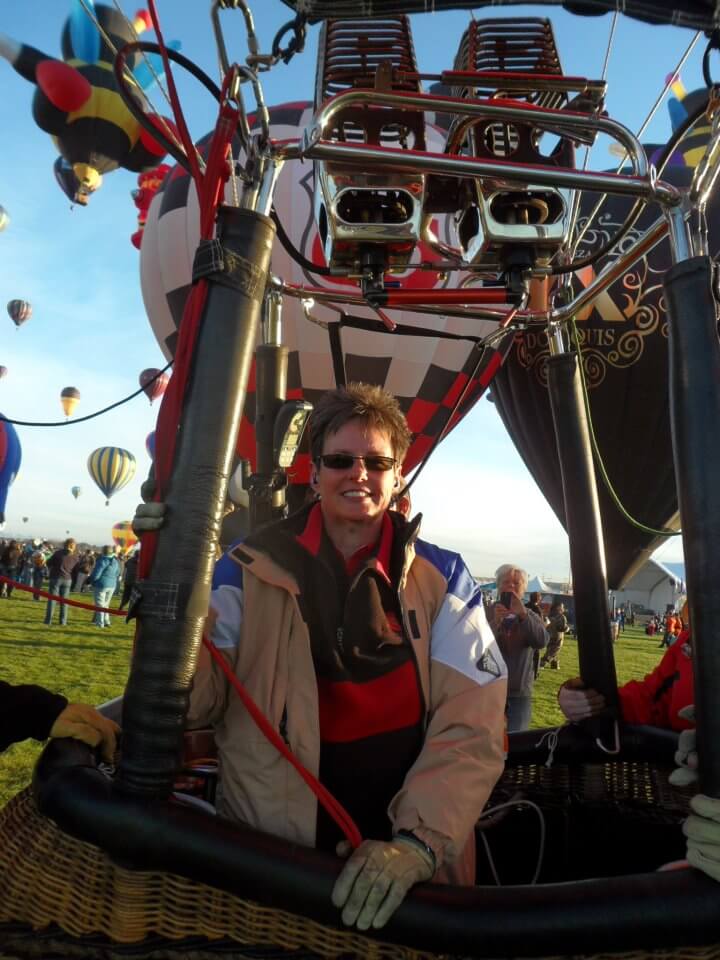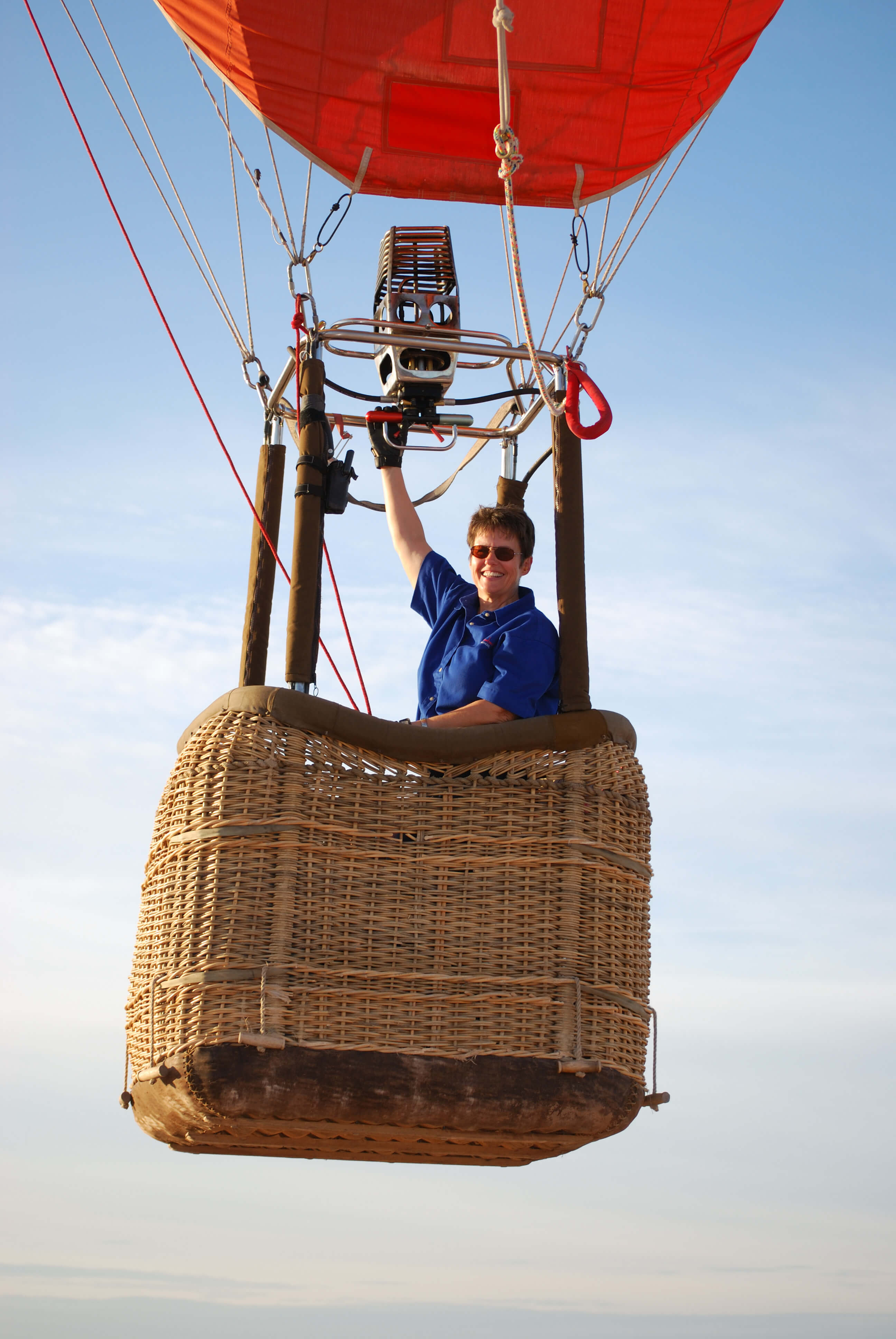Traveling at an approximate altitude of 3,000 feet, and sometimes even higher, a hot air balloon flight is an experience like no other. Passengers have delighted in the experience of gentle flights drifting across breathtaking terrain and scenery. Famous faces such as Steve Fosset, Bertrand Piccard, Brian Jones and Richard Branson have taken ballooning to new limits and tested just how far hot air balloons can go when it comes to performance, altitude and endurance.
Many international ballooning hotspots such as the Cappadocia, Turkey, Serengeti, Tanzania, Bristol, UK and Albuquerque, New Mexico, have been known to attract both balloon pilots and tourists seeking to experience extraordinary flights with otherworldly scenery, featuring stunning landscapes and wildlife.
Veteran Balloonist and instructor Elizabeth Wright-Smith, known simply as Beth, explains that views differ depending on whether you are flying across mountains, down valleys or over flat terrain. She also reveals that it is almost impossible to experience the same flight twice.
She says: “Every flight is amazing, because it’s different from the one you did the day before, even if you’re flying in the same place.”
Based in Albuquerque, New Mexico, one of the favored locations for hot air ballooning, Beth is one of the oldest second-generation balloon pilots. She followed in the footsteps of her father, who began ballooning in the late 1960s.
Hot air ballooning is often considered to be a family sport. But Beth’s introduction to ballooning was through Tracy Barnes, an associate of her father, who built balloons from a barn in Minneapolis, Minnesota.
This early exposure sparked her curiosity and she started to learn more about the industry after becoming an active crew member. Her first flight took place in Alburquerque during the inaugural World Hot Air Ballooning Championships in 1973, organized by Sid Cutter. Today, annual balloon festivals attract millions of visitors, and, at each event, more than 100 balloons can be seen across the sky at once.
Beth’s first flight was like nothing she had experienced before – or since – as she was surrounded by more balloons than she had ever seen before. Usually, balloons take off in smaller numbers, but, as her maiden voyage occurred during the 1973 Championships, the sky was filled with hot air balloons.
Beth says: “When we took off, I was used to the noises of the burners and I had an idea [about] how they flew. But to just lift off gently from the ground and be surrounded by all those balloons was fascinating. It was magical and I was just so excited about it.”
To date, Beth has over 40 years’ experience as a balloon pilot, and more than 5,000 hours of balloon flight time under her belt. In 1985, Beth began giving pilot training, and has since trained over 400 students and accumulated over 2,000 hours of flight instruction. She is also the owner and chief pilot at Airborne Heat, one of five FAA certified part-141 flight and ground schools in the United States.
Beth notes that, as a balloon pilot, flying has changed over the last four decades and so have technologies and methodologies involved in flight preparation.
Beth explains: “[In the past] we were all flying out in the open. You were rarely flying anywhere near any big congested areas and that’s not the case anymore. Ballooning has become more and more metropolitan, and there’s a lot of balloons flying in more congested airspace, not just with people and things on the ground, but the airspace is much more congested now than it used to be.”
Beth adds that before a flight “we check the weather with FAA flight service like everyone does, and we get a general picture. But that’s not enough for us, because we are very susceptible to micro-meteorology. So, we do a lot more weather checks and we’re looking at a lot more details than the average sport airplane pilot would.”
Among these pre-flight preparations, one particular check involves deploying helium test balloons in the region of flight to gather information regarding wind behavior at different altitudes for navigation purposes.
The challenges involved in piloting a hot air balloon successfully are far greater today than in the past. However, this has not deterred an influx of students from aspiring to become balloonists.
So, is there an increase in the number of students without family ties to the industry who are keen to become involved in ballooning?
“There are,” says Beth. “It was a family sport to begin with where the dad was usually the pilot and the mom and the kids crewed, and that’s still true today. But there’s also a lot of people who don’t have families who are part of the community.
“They’re going out ballooning with their friends, and their friends are crewing and I know a few people who are married, but their spouses aren’t at all interested. And so, they’re just going out and doing their thing on their own.”
Beth notes that during the past 10 years, not only have more and more women joined the industry but their roles have also changed.
She says: “I found more women coming into ballooning as students in the past 10 years or so than there were before. It’s still a minority, but I think the number of women in ballooning now is higher than the number of women pilots in aviation in general. So, it’s still low but definitely gaining ground. And women are gaining more respect for their abilities than they used to.”
Beth encourages new students and people who have the opportunity to enter the industry to start off by crewing for experienced balloonists. She explains that this the best way to get into ballooning for two main reasons.
Firstly, Beth states that “it’s a good way to start [and] it gives you an idea of what ballooning is all about”.
Secondly, she reasons that “by the time you start training, as a pilot, you are familiar with what the crew goes through, [and] you probably have a little more patience with them, because you’re flying across the sky on direct routes, and they [the crew] have to follow the road, and it’s not always that easy to get where you are.”
She adds: “Besides just understanding what the crew is going through, you also understand the balloons better by the time you start flying and that’s definitely helpful.”
Beth also challenges preconceptions that ballooning is an exclusionary sport and emphasizes that “ballooning is open to everyone”.
For Beth, one of the major misconceptions about balloonists is that “they are all rich people who can just do whatever they want, because they have so much money”.
“That is not the case at all,” she continues. “The majority of balloonists are just everyday people who have decided that this is a sport they want to do instead of skiing, or boating or whichever other sport. So, it’s not rich people in the sport.
“The second thing is that almost anyone can learn to fly a balloon. Obviously, some are better at [it] than others. But very few people can’t learn to fly a balloon and be safe at it.”




